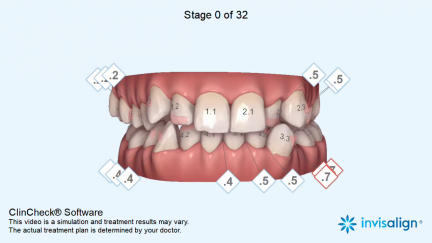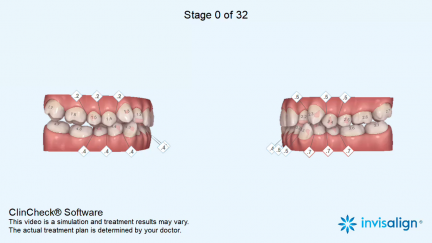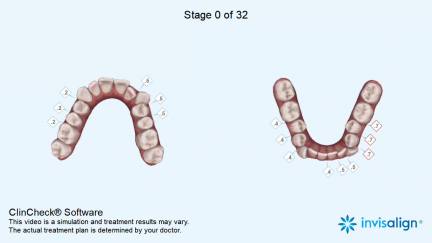Class III, Posterior crossbite, Anterior crossbite, Edge to edge bite, Deep bite, Narrow arches, Asymmetric arches, Maxillary midline deviation, Mandibular midline deviation, Midline shift, Crowding, Rotations
Distalization
, Leveling Curve of Spee
, Extrusion
, Intrusion
, Expansion
, Proclination
, IPR
, Elastics: Class III
Courtesy of Dr K. Malekian,
2018

Treatment Summary
Patient Information
- Age: 30
- Gender: male
- Invisalign Submission Option: Invisalign Full
Total Treatment Time
- 21 months
Number of aligners
- Maxillary: 32 + 33 + 20 = 85
- Mandibulary: 32 + 33 + 20 = 85
Aligner Wear time
- 10 day aligner change for treatment aligner. Refinement aligner change range between 7-5 days.
Results achieved
- Class I relationship achieved
- Class I relationship maintained
- Functional canine guidance on both sides
- Anterior crossbite corrected
- Posterior crossbite corrected
- Normal overjet and overbite achieved
- Deepbite improved
- Overjet improved
- Significant improvement ofoverbite
- Significant improvement of overjet
- Midlines coincident
- Proper axial inclination of incisors
- Curve of Spee levelled
- Arches aligned and coordinated
- Alignment of both arches through derotation
- Arch form improved
- Aesthetic smile linewas achieved
- All treatment goals were achieved case
- Harmonic arches were achieved
Comments
- Determine space selection was the key factor to resolve the severe crowding in the upper and lower arch
- Staging was also a key factor: We started with high expansion of upper molars and premolars and when gained enough space we continued with arch development and retraction to extrude upper canines
- IPR was planned at upper and lower premolars
- Carefull IPR tracking with distalization movement of upper and lower premolars allowed space in order to align high angle rotation of canines 2.3,3.3 and 4.3 .
- Conventional bite ramps at the buccal surface of lower four incisors were used in order to correct the deepbite
- Class III elastics were used in order to improve the anterior/posterior relationship and turn Class III canine and molar into full class I molar and canine.
- Proclination of upper laterals 1.2 and 2.2 in order to correct the anterior crossbite.
- Arch coordination tool at clincheck Pro was very helpfull.
- The maxilla and mandible arch form at stage U0-L0 were very asymmetric and required arch form coordination.
- Lower incisor proclination and simultaneously lower canines were retracted and distalized

 2019 Peer Review Award
2019 Peer Review Award
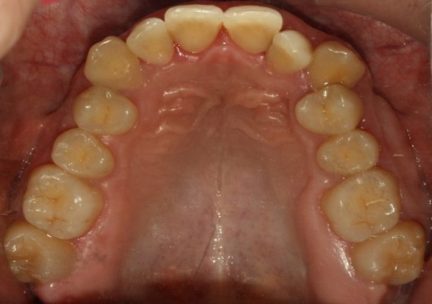











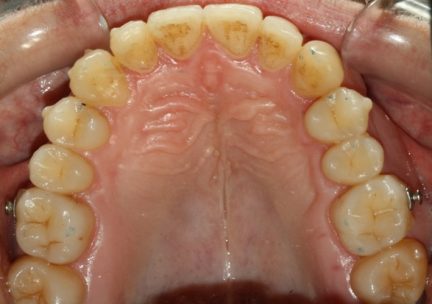






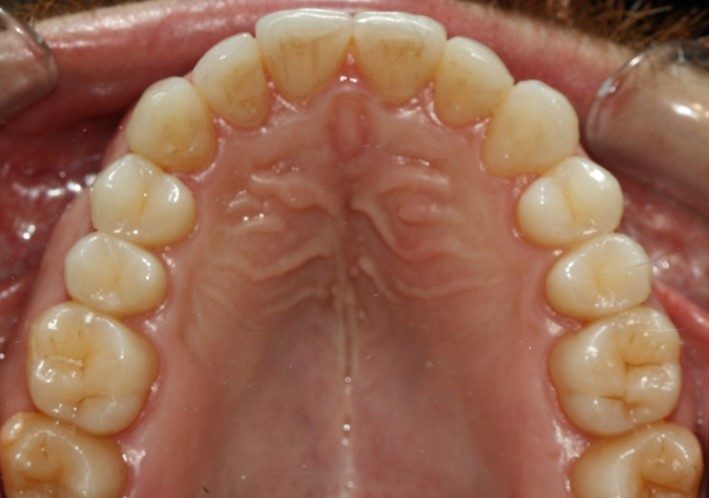
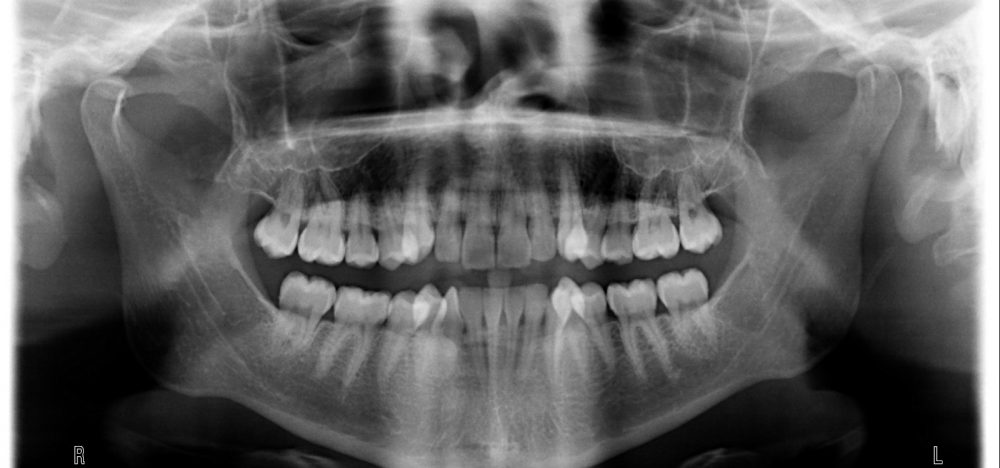 314
314 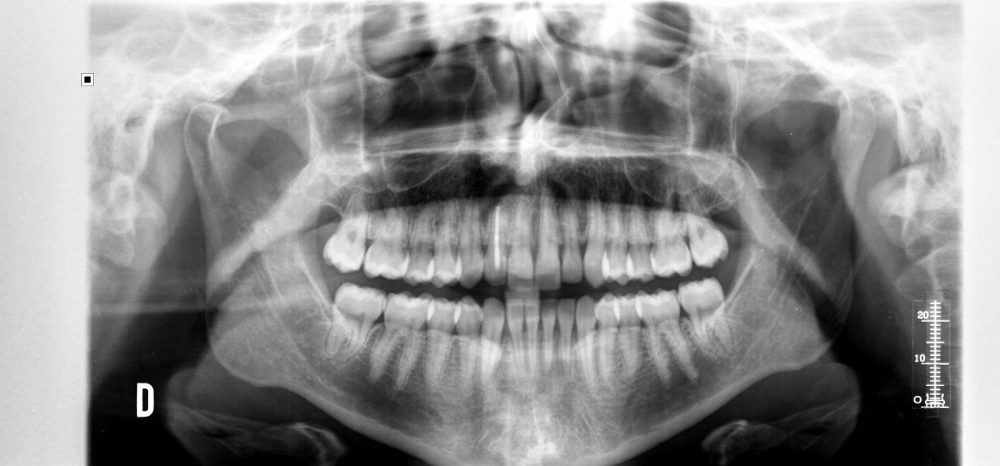 308
308 